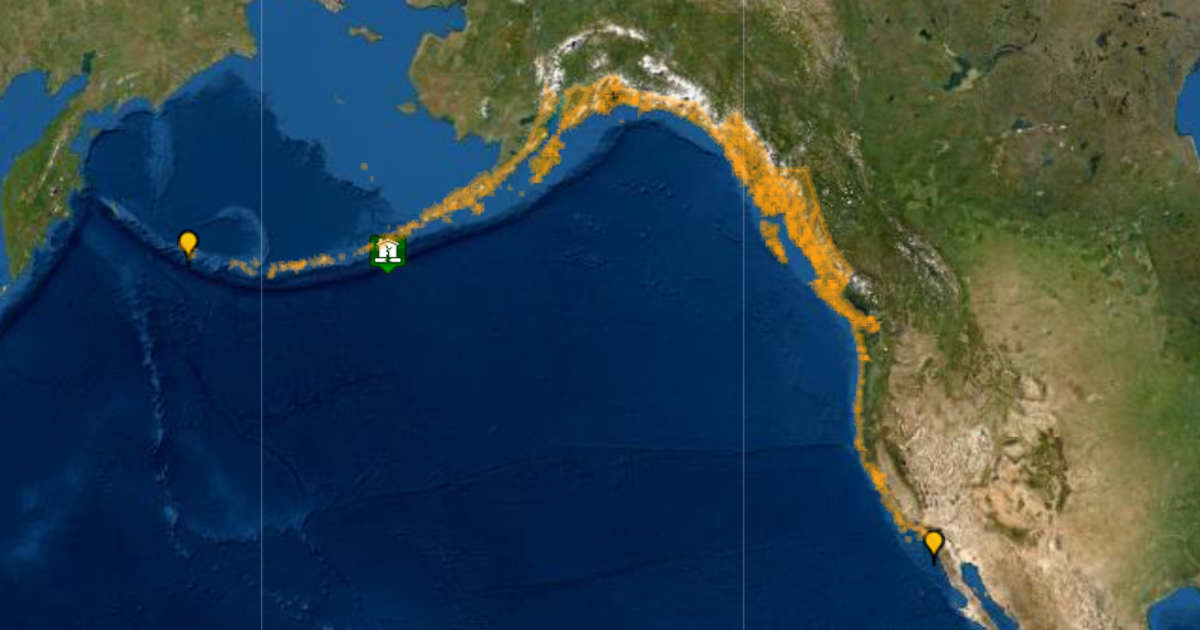
A tsunami advisory is in effect for the West Coast of the United States, Alaska and Hawaii after a volcano erupted in the Pacific. “A Tsunami is occurring,” the National Weather Service’s National Tsunami Warning Center said on Saturday.
“Move away from the shore and head to high ground,” it said, warning that the first wave may not be the largest.
A tsunami advisory — meaning “a dangerous wave is on the way” — was issued for the following areas, stretching from southern California to Alaska’s coastline, according to the warning center:
- The California coast from the California-Mexico border to the Oregon-California border, including San Francisco Bay.
- The Oregon coast from the Oregon-California border to the Oregon-Washington border, including the Columbia River estuary coast.
- The outer coast of Washington state from the Oregon-Washington border to Slip Point, Columbia River estuary coast, and the Juan de Fuca Strait coast.
- The north coast of British Columbia, and Haida Gwaii, the central coast and northeast Vancouver Island, the outer west coast of Vancouver Island, the Juan de Fuca Strait coast.
- The inner and outer coast of Southeast Alaska from the BC-Alaska border to Cape Fairweather, Alaska.
- South Alaska and the Alaska Peninsula: Pacific coasts from Cape Fairweather, Alaska, to Unimak Pass, Alaska.
- Aleutian Islands: Unimak Pass, Alaska, to Attu, Alaska including the Pribilof Islands.
An advisory was also issued for Hawaii, where boats were reportedly moved out of the water by the tsunami and onto docks. “A tsunami is currently being observed by all Islands’ Emergency Management,” the Pacific Tsunami Warning Center tweeted. “We are relieved that there is no reported damage and only minor flooding through-out the islands.”
The advisories were issued after an undersea volcano erupted Saturday near the nation of Tonga in the Pacific. A tsunami warning was in effect for all of the archipelago, according to the Tonga Meteorological Services, and 2.7 foot-waves were detected, Pacific Tsunami Warning Center data showed, according to The Associated Press.
Impacts were being seen in Alaska around 7 a.m. local time, and in California. In Washington, waves were predicted to hit Long Beach starting at 8:35 a.m., followed by other areas in the state later in the morning.
The California Governor’s Office of Emergency Services said tsunami heights were expected to be 1-2 feet based on what was being seen in Hawaii.
“Strong and unusual currents are expected along the coast, and in bays, marinas, and harbors,” the U.S. tsunami warning center said. Live-aboards were urged to seek shelter.
Strong waves and currents are possible in areas under the advisory, the center said. “Some impacts may continue for many hours to days after arrival of the first wave.”
Later waves may be larger than any initial wave, and “each wave may last 5 to 45 minutes as a wave encroaches and recedes,” according to the warning center.
Signs of a tsunami include strong currents, a shoreline that has receded or is receding quickly, and unusual waves and sounds. “The tsunami may appear as water moving rapidly out to sea, a gentle rising tide like flood with no breaking wave, as a series of breaking waves, or a frothy wall of water,” the National Tsunami Warning Center said.
In Alaska, any waves that hit are primarily forecast to impact coastlines that are south-facing.
“We don’t issue an advisory for this length of coastline as we’ve done — I’m not sure when the last time was — but it really isn’t an everyday experience,” Dave Snider, tsunami warning coordinator for the tsunami warning center in Palmer, Alaska, said, according to the AP. “I hope that elevates the importance and severity for our citizens.”
A tsunami advisory is one level below a warning — and one step above a watch. It means dangerous waves of 1-3 feet and strong currents are expected. People are urged to stay away from the shore and out of the water.
Download our Free App
For Breaking News & Analysis Download the Free CBS News app

